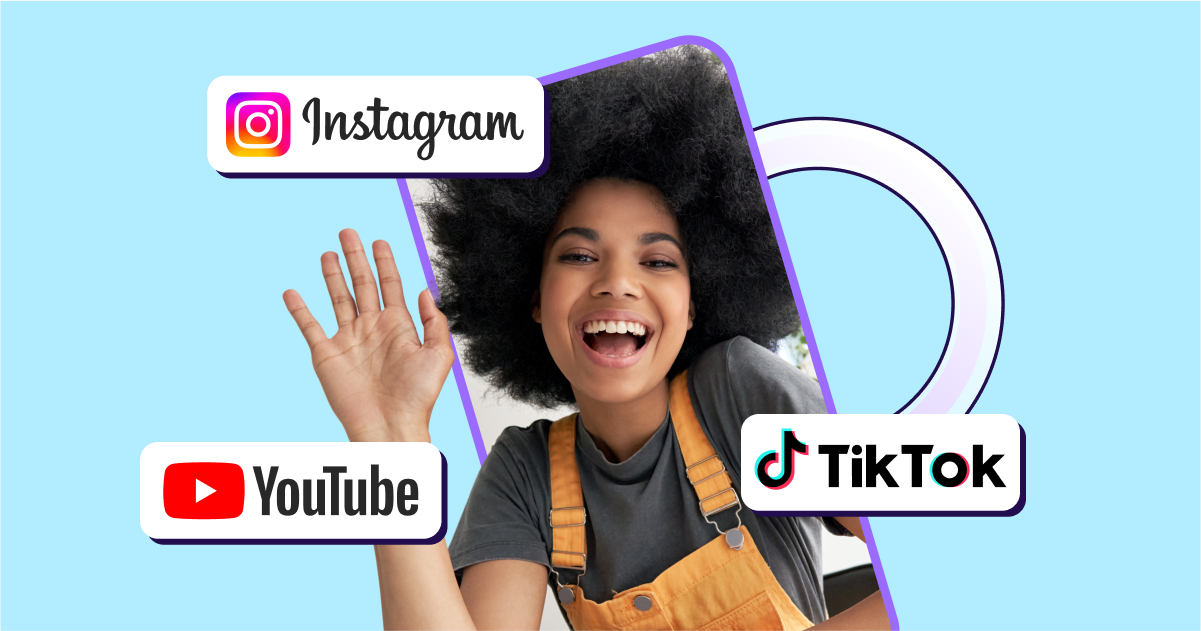
Universal Links
Universal Links are deep links for iOS devices, which direct users to specific content within an app or a webpage.
What are Universal Links?
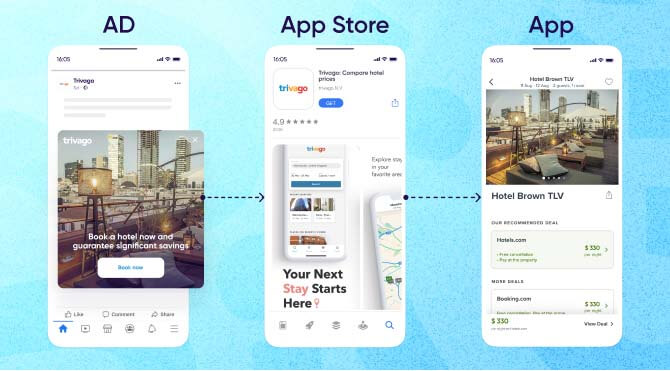
Universal Links are Apple’s iOS version of deep links, which are unique URLs that direct a user to a specific webpage or a piece of content within an app. If the user doesn’t have the app installed, the Universal Link will send them to the app store to download it. Once it’s installed, they’re directed to the intended section on the app.
What are the differences between Universal Links, app links, and deep links?
Universal Links, app links, and deep links are essentially the same thing, but there are some small differences you should know about. Deep link is the umbrella term for links that direct a user to a website or a destination within an app. Android refers to these links as app links, while on iOS they’re known as Universal Links.
On a more technical level, there is a difference in URL formats:
- A deep link uses a custom scheme with a path that defines the action: appname://open-app?name=appname.
- Universal Links, on the other hand, are still web URLs that open a web page if the app isn’t installed: www.appname.com/app-page.
This means deep links only work if the app exists, while Universal Links have a fallback to the web page.
Benefits of Universal Links
The main benefit of Universal Links is improving user experience, which results in higher conversions, retention, and engagement. Let’s take a deeper look at how this works.
Uninterrupted user experience
Making users jump from one app to another is a distracting and disruptive experience. When a user clicks your Universal Link, it will direct them to exactly where they need to be — whether it’s the app store, or a specific piece of content within your app.
Increased retention rates
Universal Links play a key role in bringing users into your app. And once you get them through the door, it’s easier to keep them engaged with personalized recommendations, ongoing deals, and other retention-boosting tactics.
Let’s say a user clicks on your ad for the latest sneakers. Instead of directing them to the website — where they might get distracted — a Universal Link can direct them to the exact product within your app (stopping off at the app store if they don’t have it installed).
That’s a positive experience for the user, and a chance for you to showcase the benefits of your app so they keep coming back.
Boost app conversions
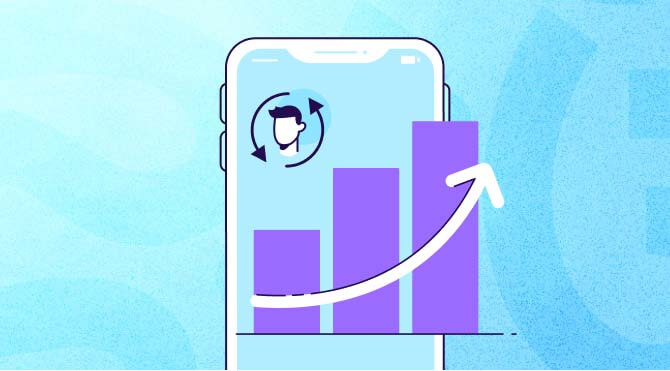
The sooner a user gets to the content they’re looking for, the more likely they are to convert. And Universal Links conveniently remove the friction of users searching for your app in the app store, installing it, and looking for the page they initially planned on visiting.
And let’s not forget Universal Links are universal – they work across any device or platform, meeting users wherever and however they choose.
Build a secure user path
Universal Links leave no room for hackers to hijack links or send users to a fraudulent app. Developers are given full control of directing users across different channels in a safe environment.
How to implement Universal Links
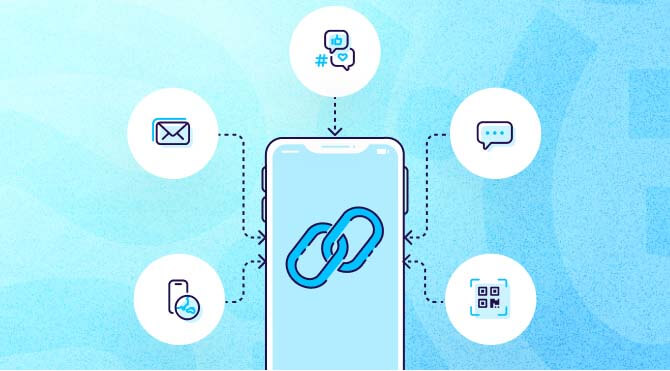
As well as all the benefits mentioned above, Universal Links are easy to implement. Here are the steps to start using them in your app:
- Obtain the app bundle ID and prefix ID.
- Associate your app and your website. Specify the URLs that your app handles. This is a crucial step to ensure your Universal Links can’t be attacked. Limit available actions to minimize the risk to user data. For example, don’t let the Universal Links delete content or access sensitive information about the user. When testing, use improperly formatted URLs.
- Update your app delegate to respond when it receives an NSUserActivity object with the activityType set to NSUserActivityTypeBrowsingWeb. Here’s Apple’s documentation for reference.
- Configure mobile apps to register approved domains.
- Configure the URI scheme.
- Test the URI scheme.
Troubleshooting Universal Links
Although they’re simple to implement, there are a few issues you may encounter when setting up Universal Links.
Apple has set out an 8-step diagnostic procedure to help you figure out what’s going wrong with your Universal Links – this is a good place to start if you run into difficulties.
We’ve also addressed a couple of common challenges below.
Blacklisted apps
Universal Links won’t work on any apps blacklisted by Apple. Apps that will always work include Messages, Mail, WhatsApp, Gmail, and Inbox.
Link wrapping, click measurement, link redirects
One common issue with marketing automation tools is sending Universal Links through an automatic redirect to measure performance. The result is that users are redirected to the web fallback URL instead of the app. This essentially kills the main functionality of Universal Links, affecting marketers who manage paid ads or have click measurement enabled with their email service providers (ESP).
The solution is to work with a deep linking provider that has direct integrations with ESPs and provides attribution measurement.
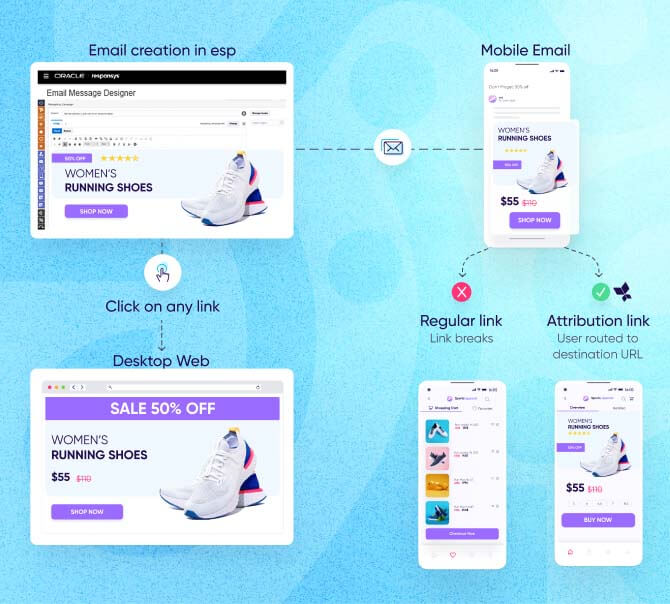
Measuring for success with Universal Links
While we’ve covered the general advantages of Universal Links, it’s important to see how they’re benefiting your app specifically. Here are a few KPIs you should measure:
Click-through rate (CTR): Measures the percentage of users who click on a Universal link, compared to the total number of users who view it. A high CTR shows the link is relevant and engaging.
Conversion rate: Measures the percentage of users who complete the desired action after clicking the Universal Link. This can be anything that’s important to the success of your app, including making a purchase, signing up for a subscription, or installing the app.
Retention rate: Measures how many users engage with the app after clicking on the Universal Link. This metric is even more compelling when you measure it against users who did not come from a Universal Link. You may also consider measuring session durations and bounce rates in the process.
To learn more about these and other app marketing metrics, watch our video:
Key takeaways
- Universal Links are deep links for iOS devices that direct users to specific content within an app or webpage. Users who don’t have the app installed are first directed to the app store, and then onwards to the relevant in-app location.
- Deep link is the umbrella term for links that redirect users to a specific location. Universal Links are the iOS version, while Android calls them app links.
- Universal Links can help improve user experience, and in turn boost engagement, retention, and conversion rates while building a secure user path.
- Apple provides guidance to help you implement Universal Links and troubleshoot any problems you may encounter.
- Tracking metrics like click-through rate, conversion rate, and retention rate provides an insight into the success of your Universal Links.



